India general election 2019: What happened?
Results for India's general election released on 23 May saw a landslide victory for the Bharatiya Janata Party (BJP), which increased its huge parliamentary majority.

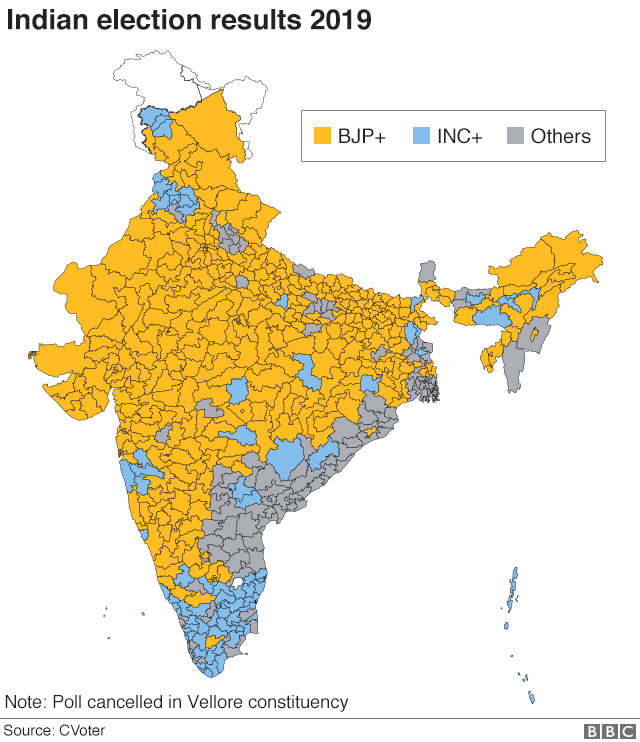

The margins of victory
Narendra Modi and his ruling BJP have swept back to power. The party won 303 seats in the Lok Sabha, the lower house of India's parliament, bettering the 282 seats they won in 2014 - a performance that not many thought was possible.


A party needs to win 272 seats for a majority in parliament. The BJP's victory in 2014 was the first time in three decades that a party had been able to win that number of seats on its own.
Rahul Gandhi's opposition Indian National Congress (INC) and its allies, who only won 54 seats the last time, put up a stronger fight this time but were unable to make any meaningful gains.

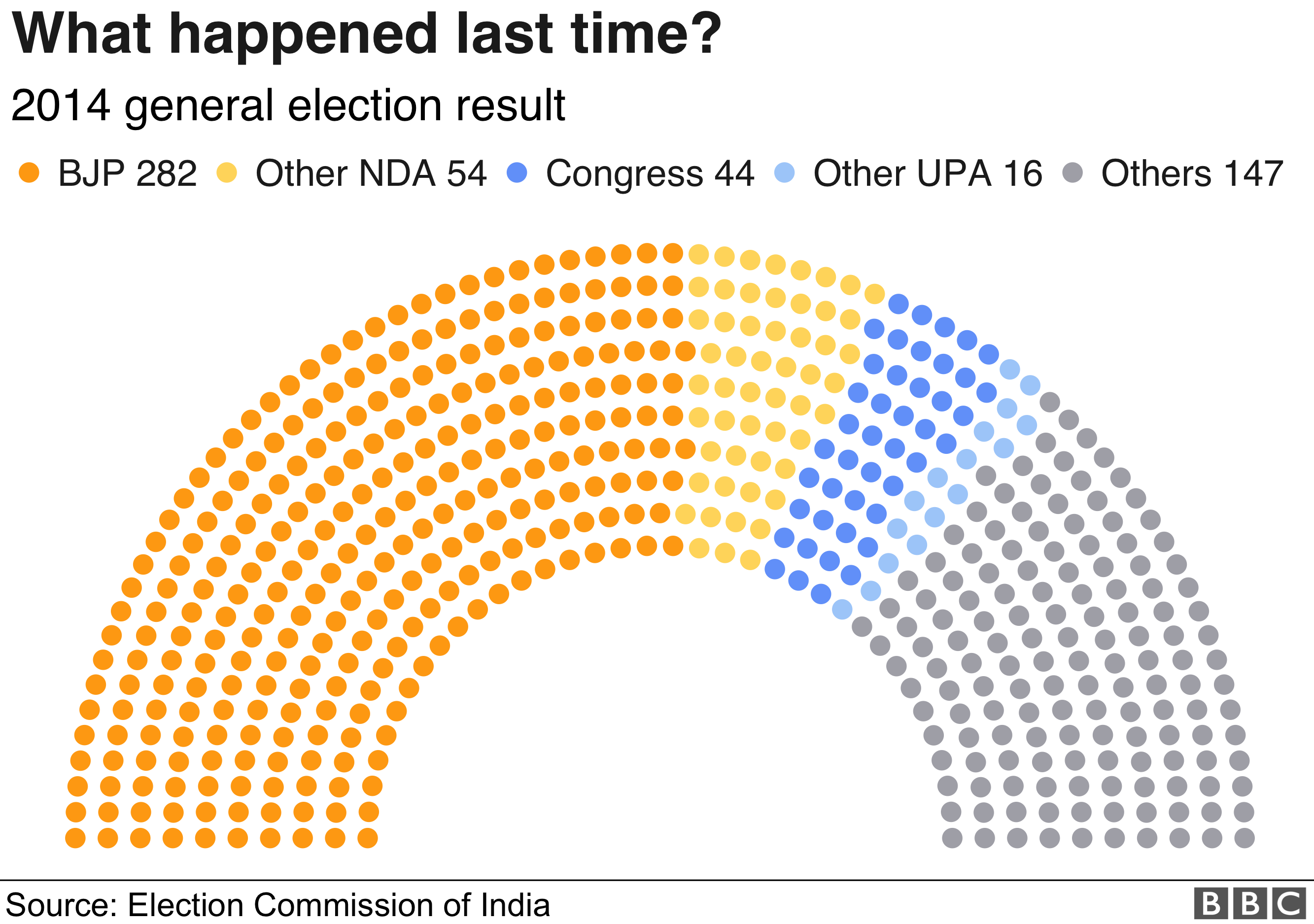


Women voters made their voices heard
Nearly half of India's 900 million registered voters are women.
Since independence, female voters have increasingly turned out to vote in greater numbers.
But 2019 marked the first time that female voter turnout equalled male voter turnout.

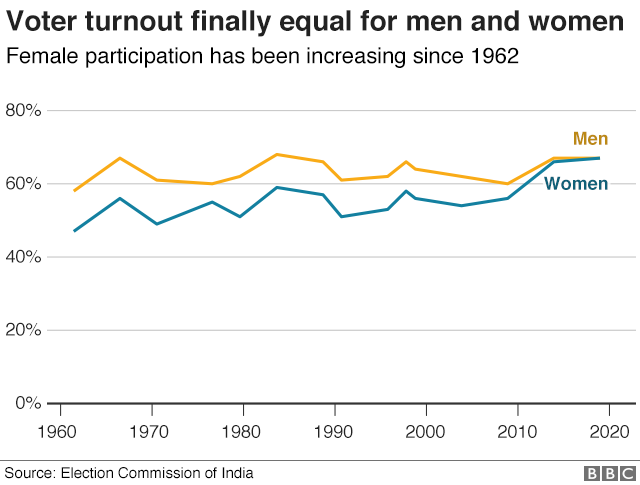

This was the best year for female candidates
This election saw not only the largest number of female candidates stand for election, the number of women who actually won was also the highest ever.

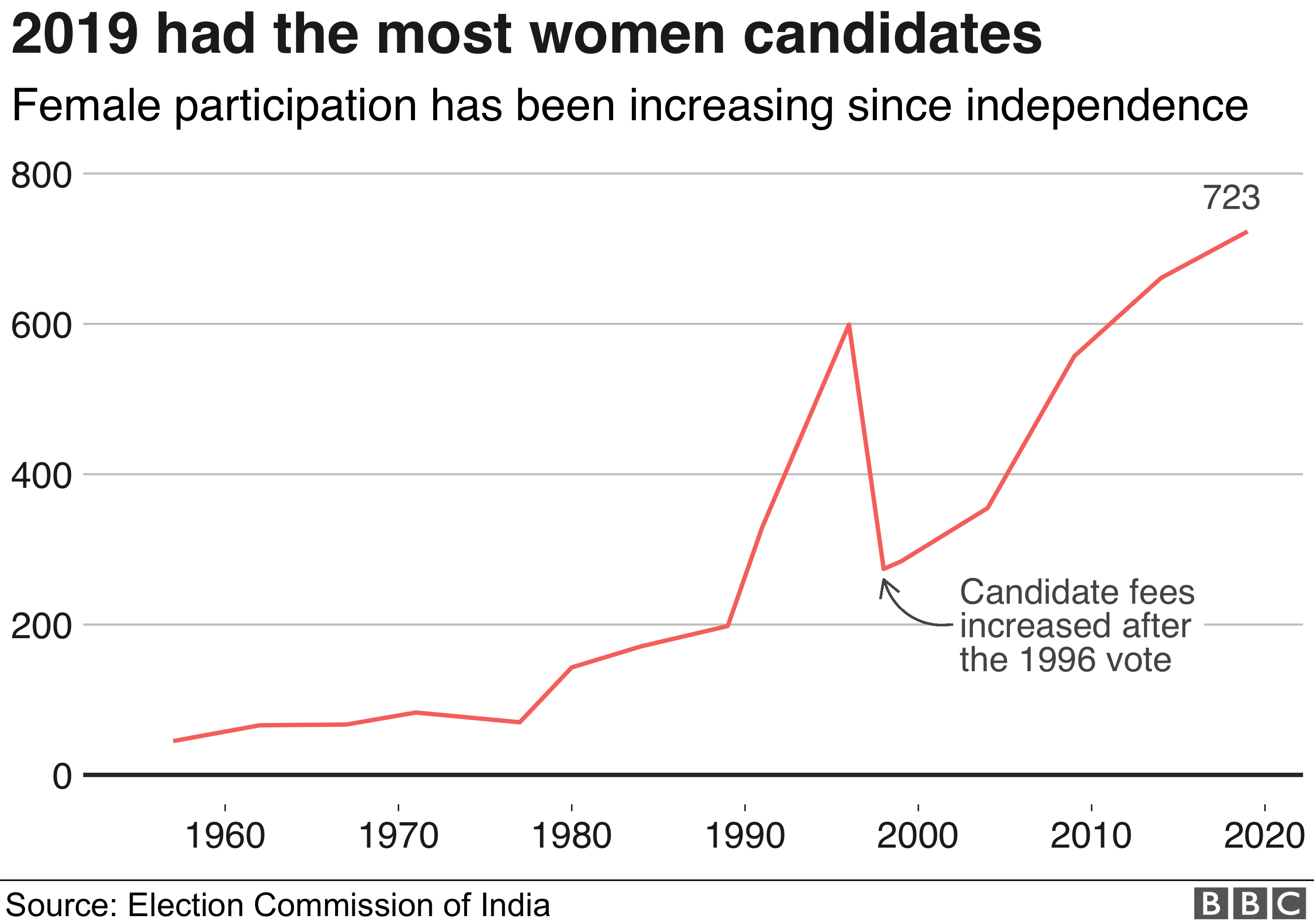

But men still dominate national politics
Women have historically comprised a mere fraction of the candidates in India's general election, and 2019 was no different.
Only 723 of the 8,000 candidates were female. That's less than one in 10.

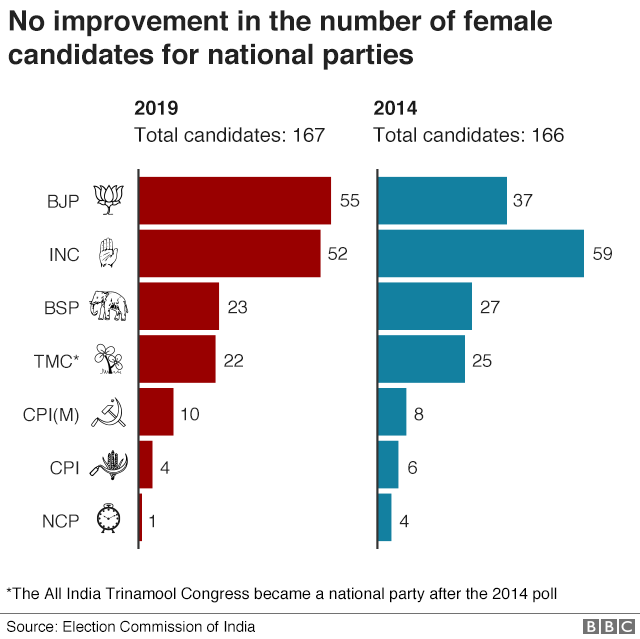

The seven national parties actually fielded about the same number of candidates in 2019 as they did in 2014, which was not offset by a concerted BJP effort to improve gender parity.












